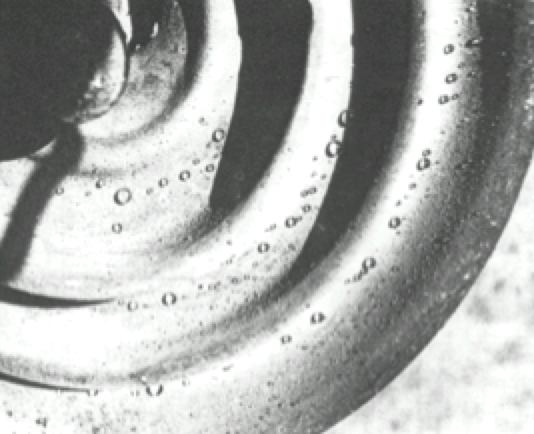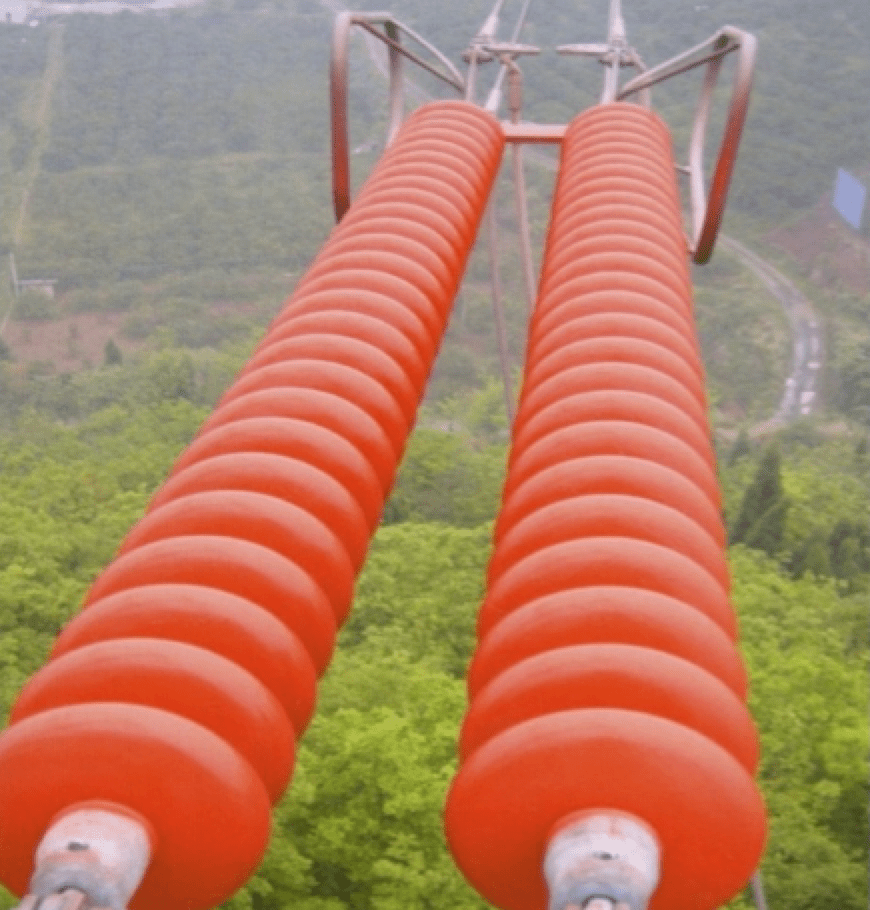[inline_ad_block]
Study of RTV coatings to combat pollution flashover of line insulators began in China during the early 1980s, with the first trial application in 1986 when Tsinghua University in Beijing co-operated with the Tianjin Power Bureau and applied coatings to 15 insulator strings on a 35 kV line running near a coastal chemical factory. The area was so polluted that, even with regular cleaning, contamination flashovers still occurred. The insulators already in use on that particular line were strings of 4 double umbrella-shed porcelain disc insulators of the type commonly used in China in areas of moderate to heavy pollution. However, it was decided to conduct the trial application of coatings on strings of only 3 regular shape disc insulators. Evaluations were then performed to monitor the relative performance of these different strings on the same towers. As part of this work, maintenance staff would visit test towers during severe weather to observe what was taking place. In their final report, they noted that, during heavy fog for example, the uncoated insulator strings had loud noise from corona as well as serious discharge activity – sometimes looking like a string of lanterns at night. By contrast, the RTV coated insulators with only 3 discs in the string showed no evidence of discharges. Indeed, over years of monitoring the coated insulators, with no cleaning conducted on them, experienced much less noise and discharges during severe weather than uncoated insulators installed on the same towers. A few of these coated insulator strings were subsequently removed for analysis and it was found that they still had excellent hydrophobicity and high contamination flashover voltage. Based on this, RTV coating technology was approved for widespread application in Tianjin, including on substation support insulators and bushings as well as for important overhead lines from 35 kV to 500 kV.
Of the 15 strings of coated insulators in that first trial application, a number were removed after 6, 9 and 14 years of service for detailed observation and testing. It was found that, in spite of some minor surface damage, contamination flashover voltage remained high. In fact, 5 of these strings were still in service after 25 years, without cleaning or other maintenance required.

CLICK TO ENLARGE
By the early 1990s, RTV coatings also became increasingly popular in Henan, Shandong, Liaoning, Jilin, Heilongjiang and Shanxi Provinces – all having such positive experience that the coverage rate of coating application in these provinces has become as high as 80-90% of all insulators. Apart from the benefit of significantly decreasing contamination flashovers, maintenance work such as insulator cleaning has also been reduced. Indeed, RTV coating technology is now so widely accepted by power companies across China that there is already a domestic industry comprised of a growing number of local manufacturers. Many of these co-operate with local universities or research institutes to continually improve product quality and some even have their own specialized teams to carry out on-site coating installation.
Given the success with RTV coatings, there are now two effective options when it comes to selecting line insulators for areas exposed to moderate or heavy pollution: silicone rubber insulators and RTV coated glass or porcelain insulators. The main advantages of composite insulators are their comparatively low price, light weight as well as easier transport and installation. Their disadvantage is that service experience is still relatively limited compared to ceramic insulators. Moreover, problems such as rod fracture or unexplained flashover have occurred periodically to the extent that, even though such failure rate is low, there is still a degree of concern. In fact, some Chinese power companies still prefer not to apply composite insulators on tension strings, especially at the higher transmission voltages.

CLICK TO ENLARGE
The key advantage of RTV coatings on porcelain or glass is that they combine the reliable mechanical properties of inorganic insulators with the excellent pollution withstand of silicone rubber. Their main disadvantages are higher price and the risk that not every insulator on the tower receives a consistently good coating quality. Indeed, for newly built lines, application of RTV coated insulators is clearly more expensive than the option of using composite insulators. By contrast, in the case of existing lines, the cost to coat ceramic insulators already in service is not high when viewed against the expense of replacing all of them with composite types.
In terms of quality problems related to coatings, it had been difficult to ensure consistent application by the initial method of brush coating. Coating quality then improved greatly with arrival of spray coating – even though some utilities prefer to remove the insulators first, coat them on the ground and then re-install them afterwards. There have also been several porcelain and glass insulator manufacturers who have offered the option of carrying out the RTV coating in the factory prior to delivery. This ensures more consistent coating quality.
Thanks to these developments, Chinese power utilities have become more willing than ever to employ RTV coatings on important transmission lines. For example, the Tianjin Power Bureau applied coatings to a key 220 kV line connecting it with Beijing. Moreover, for tension tower insulators in areas with high pollution, most utilities these days opt for RTV coatings on porcelain or glass strings.








